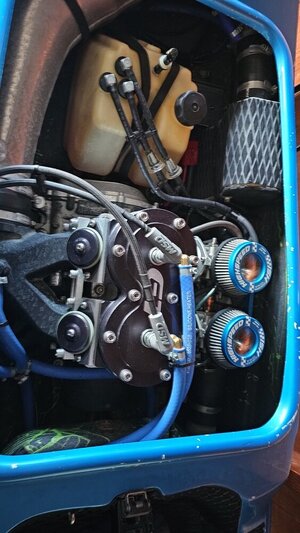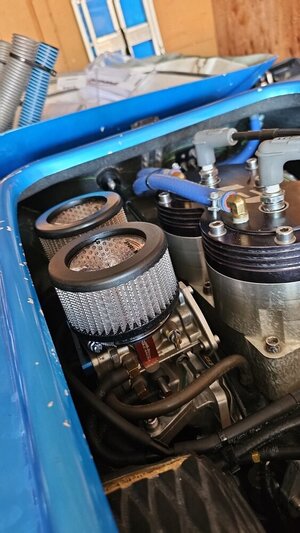When does the pop-off start?* It generally happens when the butterflies start to open and expose airflow past those little drilled metering holes, located above the closed butterfly. The lower the pop-off (richer), the easier it is to let more fuel flow. The higher the pop-off (leaner) the harder it is to suck fuel through those little holes.
You change this variable with larger needles and seats and or softer springs (making it richer). The opposite is true when you go with smaller needles and seats or stiffer springs, (making it leaner). Sorry if this is "old news".
*Providing that the butterflies are not worn away at the shaft/bore ends. Worn carbs are a waste of time to attempt to get tuned right, Air leaks past the wrong spots.
Good aftermarket carbs are easier to tune than say OEM dual 44's and or 46's. Gotta remember what they were designed for. My 94 FX came with a 61X motor and a single 44. It had a 1.5n/s and about 43psi pop-off, and a stock flame arrestor (pretty restrictive). It ran well with a smooth power band from idle to WOT. Now take a pair of them and try to make them work just like that a 62t case. Nope. You can get the idle and the WOT to work, but every thing in between will be either a little rich or lean... or both. Aftermarket carburetors (not talking annular carbs here) have a relocated booster (more efficent) that helps even out the metering transition. Refining the mid throttle operation.
OEM ported cylinders can be real screamers that make great mid & top end power. But they can't compare to a large CC power valve cylinder which is designed to provide a wider power band, especially in the lower RPM range. The 155mm set back mag takes a
lot to get going, especially from a idle. Big motors have trouble spinning them up from a idle too. And the practice of "a big motor, a big prop" doesn't always work out.
In a last attempt to get closer to your goal, you might need to bore the nozzle? Try even a lower pitch impeller? Maybe add a spray bar to that dry pipe and tune it for a lower hit?
Does this help clear things up? Or is it still clear as mud...
Once again...the "manual"
https://mikunipower.com/Manuals/SBN_Manual.pdf




